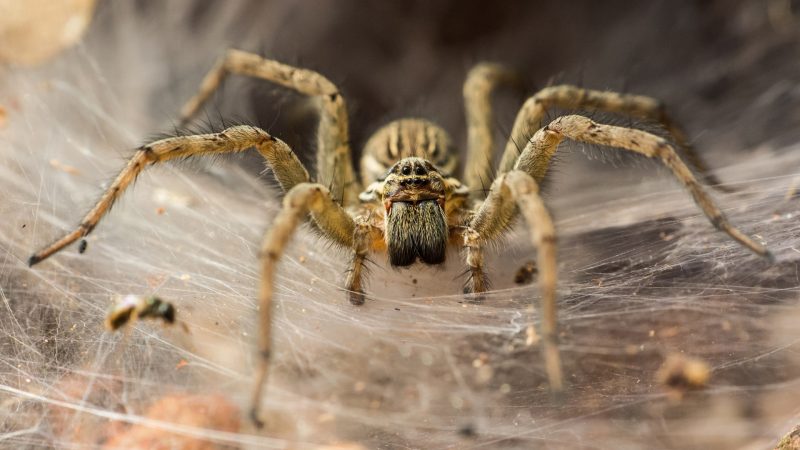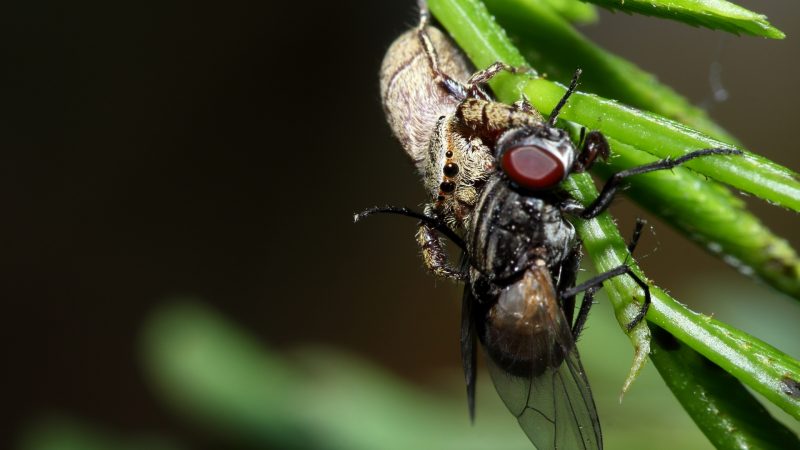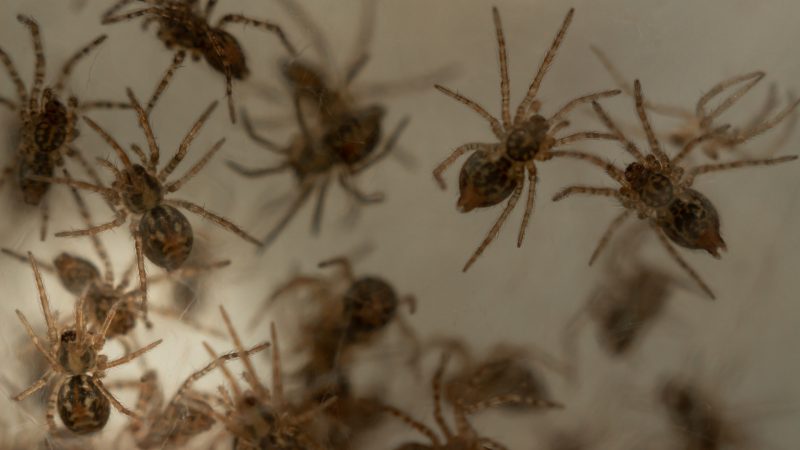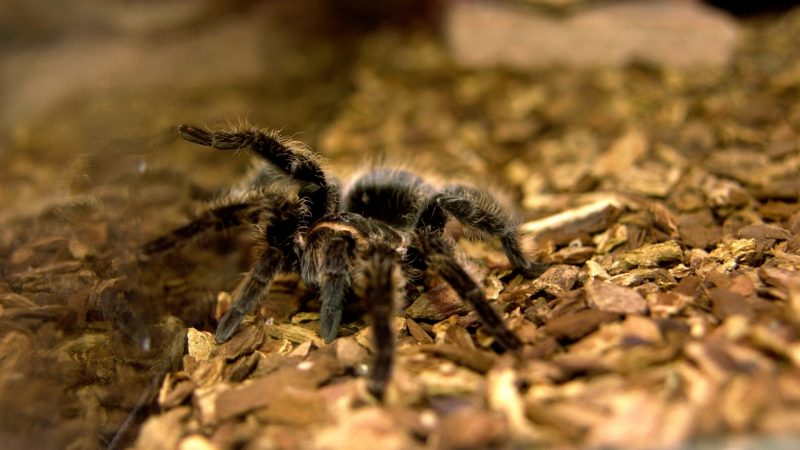No matter where you live in the world, there’s probably some type of spider that shares your home. Spiders are versatile creatures that can live in a wide variety of climates, so you’ve likely seen plenty of them in your lifetime. But what exactly are spiders?
Are spiders insects (bugs), arachnids, mammals, or reptiles? Spiders aren’t insects. They’re members of the kingdom Animalia and the phylum Arthropoda, just like insects. However, spiders are in the class Arachnida, while insects are in the class Insecta. All true insects fall into the Insecta class; spiders are arachnids.
In this article, we’ll take a closer look at the taxonomic identification of spiders and determine precisely why they’re classified as “arachnids” instead of insects. We’ll also look at common traits of spiders, such as what they eat, what they look like, and more. Keep reading to find out everything you ever (or never!) wanted to know about spiders.
What Is a Spider? | Taxonomy and Systematics

A spider’s taxonomic identification is as follows:
- Kingdom: Animalia
- Phylum: Arthropoda
- Class: Arachnida
- Order: Araneae
The family, genus, and species fields branch out quite a bit depending on the specific type of spider. The only “spider” that isn’t part of the order Araneae is a type of arachnid people call the “daddy-long-legs.” Two arachnids receive this name, and one of them is a spider. The other is from the order Opiliones and isn’t an actual spider, despite how it looks.
Why Are Spiders Called Arachnids?
Spiders are arachnids because, unlike insects, they belong to the class Arachnida. The word “arachnid” comes from the Greek word for spider. In Greek mythology, a girl named Arachne believed she was a better weaver than the goddess Athena and challenged her to a duel.
Athena won, and in her anger, Arachne began to weave something insulting and offensive to the goddess and the Greek gods in general. As punishment, Athena cursed Arachne, turning her into a spider so that she would weave for the rest of her days.
Are Spiders Carnivores or Herbivores?

There are over 40,000 different species of spiders, and all of them are carnivorous except for one: the Bagheera Kipling. It lives in Central America and feeds primarily from acacia shrubs. Other than that one exception, spiders are overwhelmingly carnivores, feeding on smaller insects. Larger spiders even eat small rodents and lizards.
Are Spiders Invertebrates or Vertebrates?
All spiders are members of the phylum Arthropoda. That means, in addition to being arachnids, they’re also arthropods, and one of the defining characteristics of arthropods is that they are invertebrates. Instead of a backbone, they have rigid exoskeletons on the outside of their bodies.
What Is a Group of Spiders Called?

Except for a few species, most spiders are solitary creatures. They don’t spend a lot of time with other spiders. However, there are a few species that get together and weave community webs. Furthermore, when baby spiders hatch from eggs, they generally do so all at once. In those instances, you may see a group of spiders all clustered together. That’s why a group of spiders is known as a “cluster” or a “clutter.”
Why Spiders Can’t Be Classified As Insects (Bugs), Mammals, and Reptiles?
The reasons scientists can’t classify spiders as mammals or reptiles are apparent. They share no characteristics with either of those classes. Mammals, except for the duck-billed platypus and echidna, give birth to live young. They’re also warm-blooded.
Reptiles, like spiders, do lay eggs, but they’re vertebrates. Therefore, spiders don’t fit in that class either.
When it comes to insects, though, it’s harder to differentiate the two. After all, spiders at least look like bugs. However, there are subtle differences that place spiders in a different class from insects. Let’s look at those differences now.
Difference Between Spiders and Insects
One of the most obvious differences between spiders and insects is the number of legs each has. Insects have three pairs of legs or six legs in total. Spiders, on the other hand, have four pairs of legs or eight legs total. Additionally, the body makeup of spiders and insects is subtly different.
Although both insects and spiders fall under the phylum Arthropoda, which means they each have a head, thorax, and abdomen, spiders’ bodies are a little different from insects’ bodies. The head, thorax, and abdomen of insects are three distinct areas. Spiders, though, have a fused head and thorax, called a cephalothorax.
Other differences include the following:
- Spiders eat with chelicerae; insects use mandibles.
- Spiders have four sets of simple eyes; insects have one pair of complex eyes.
- Insects have more parts to their heads; spiders have more limbs.
- Insects have antennae; spiders don’t.
- Spiders have pedipalps and spinners; insects don’t.
- Insects have more complex abdomens than spiders.
- Many, though not all, insects can fly; spiders can’t.
- Spiders can spin webs; insects can’t.
All of these differences are why spiders can’t be considered members of the class Insecta.
Are Tarantulas True Spiders?

Tarantulas are true spiders. They’re members of the class Arachnida and the order Araneae just like most other spiders. Tarantulas are larger than many spiders, and they’re covered in things called setae, which people mistakenly call “hair.” Because of this, a lot of people wrongly assume they aren’t “real” spiders, but they are.
More Information About Spiders
Do Spiders Have Hair?
All spiders have hair. It’s thin and fine, and you can’t always see it on certain spiders unless you put them under a microscope, but it’s there. Just as is true for tarantulas, though, it isn’t truly hair. Instead, it’s called either setae or trichobothria.
They’re both the same thing, but trichobothria are elongated setae that don’t taper to a point on the ends. Setae, on the other hand, get smaller and smaller towards their ends.
Do Spiders Have Mandibles?
Insects have mandibles, but spiders don’t. Instead, they have what’s called chelicerae. Some people refer to them as fangs, but they’re more like the pinches on a crab or lobster. They’re often sharp and jagged, and spiders use them to capture prey and chew and devour them.
Related: Can Spiders Bite Through Leggings?
Do Spiders Have Muscle?
Spiders have muscles, but their muscles are different from those of any other living animal. For example, most limbed animals have muscles called flexor and extensor muscles. This allows their limbs to move inward and outward.
On the other hand, spiders only have flexor muscles that allow them to move their limbs inward. For external limb movements, they use a hydraulic-like system that’s unlike anything else you’ll see on another animal.
Are Spiders Considered Pests?
The answer to this question will differ depending on who you ask. If you talk to someone with a deathly fear of spiders, the answer will be yes. However, ask a gardener the same question, and he might tell you no. It’s a complicated question without a simple answer.
There are species of spiders considered pests, especially in the United States. However, many of these species are also considered “beneficial pests” because they eat bugs that kill plants. In rainforests and places where spiders grow to immense sizes, they also eat common household scavengers like mice and rats. So, while spiders could be considered pests, they also do a lot of good for the environment.
However, some spiders are dangerous to both humans and animals, and those are generally considered pests by everyone. Luckily, the number of spiders that can harm humans is minimal. In the United States, for example, there are only three spiders that can harm humans. There are a few more scattered throughout the world, but on the whole, spiders are largely safe for humans and pets.
List of Sources
Ubick, D., Paquin, P., Cushing, P.E., Roth, V. (2005). Spiders of North America: an identification manual. American Arachnological Society.
Daddy Long Legs | Spider Research. UC Riverside Department of Entomology.
Kraemer, E. (1997). An Etymological Dictionary of Classical Mythology. Oakland University Libraries.
Jense, M.N. (2009). Herbivory Discovered in a Spider. The University of Arizona.
Burke Museum. Myth: Spiders are insects.
- How to Get Rid of Copperheads | Practical Guide - August 27, 2023
- How to Get Rid of Corn Snakes | What Makes Them Aggressive? - August 27, 2023
- How to Get Rid of Alligators | Safety Measures and Removal Methods - July 16, 2023
